Sakthan Thampuran
|
Context: Recently, the Minister of State for Tourism of Thrissur, Kerala said to replace a statue of Sakthan Thampuran.
About Sakthan Thampuran:
- Sakthan Thampuran is considered the architect of the city of Thrissur.
- Raja Rama Varma Kunjipillai or Rama Varma IX, better known today as Sakthan Thampuran, ruled over the Cochin kingdom from 1790 to 1805.
- Thrissur Pooram was started by Sakthan Thampuran.
- Thrissur Pooram is a grand celebration of Kerala’s cultural and spiritual essence.
|
Arab League
|
Context: Turkey heads to the Arab League meet for the first time in 13 years.
About Arab League:
- Establishment: The Arab League, formally known as the League of Arab States, was established in 1945 with initially just six nations.
- Members: Currently, it has 22 member states, who have pledged to cooperate on economic and military affairs, among other issues.
- Founding Members: Egypt, Syria, Lebanon, Iraq, Transjordan (now Jordan), Saudi Arabia and Yemen.
- Other Members: Libya, Sudan, Tunisia, Morocco, Kuwait, Algeria, Bahrain, Oman, Qatar, the United Arab Emirates, Mauritania, Somalia, the Palestine Liberation Organization, Djibouti and Comoros.
- Objective: To improve coordination among its members on matters of common interest.
- The league was chartered in response to concerns about postwar colonial divisions of territory as well as strong opposition to the emergence of a Jewish state on Palestinian territory.
|
Su-30MKI Aircraft
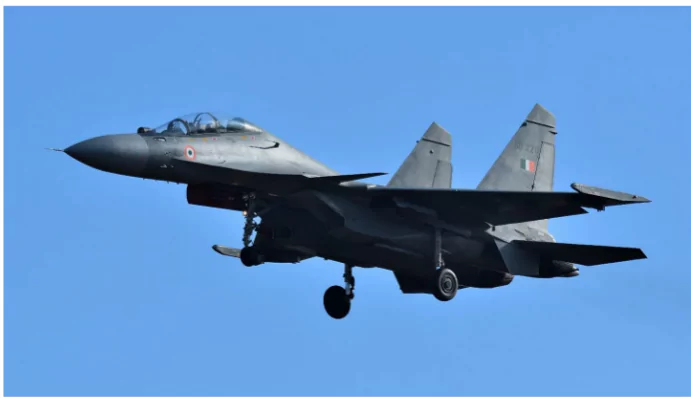
|
Context:
Recently, the Defence Ministry signed a ₹26,000-crore contract with Hindustan Aeronautics Limited (HAL) for 240 AL-31FP aero engines for Su-30MKI aircraft.
- The IAF currently operates 259 Su-30 MKI fighters.
- About Su-30MKI: It is a multirole combat fighter aircraft jointly developed by the Sukhoi Design Bureau (Russian aerospace company) and HAL for the Indian Air Force (IAF).
- Manufacturing: These aero-engines will be manufactured by the Koraput Division of HAL.
- The Russian engines are assembled under license by HAL in India.
- Procurement: It will be procured under Buy (Indian) category from HAL. The ‘Buy (Indian)’ category involves procuring products from Indian vendors that either:
- Indigenously designed, developed, and manufactured with at least 50% Indigenous Content (IC) of the total contract value.
- Have at least 60% IC of the total contract value, even if not indigenously designed or developed.
- Significance:
- The engines will have indigenous content over 54%.
- These aero-engines are expected to fulfil the need of the Indian Air Force to sustain the operational capability of the Su-30 fleet for the defence preparedness of the country, and thus enhancing India’s defence preparedness.
|
Standing Committee on Statistics (SCoS)

|
Context:
Recently, the Ministry of Statistics and Programme Implementation (MoSPI) has dissolved the Standing Committee on Statistics on concerns raised over the delay in conducting the census.
About Standing Committee on Statistics (SCoS):
- Formation: The SCoS was formed in July 2023.
- On July 13, 2023, the government had constituted a 14-member SCoS, after renaming and expanding the scope of coverage of the Standing Committee on Economic Statistics (SCES).
- Members: 10 official members, 4 non-official members (eminent academics)
- The number of members can be up to 16.
Mandates of Standing Committee on Statistics (SCoS):
- Reviewing All Surveys: The SCoS is tasked with reviewing the framework and results of all surveys conducted under the National Statistical Office (NSO).
- Data Gap Identification: The SCoS is responsible for identifying data gaps in official statistics. It will pinpoint areas where data is lacking and devise strategies to address these gaps.
- Exploring Administrative Statistics: The committee is mandated to explore the use of administrative statistics to improve data outcomes.
- Technical Advisory Role: The SCoS will provide technical advice to the Ministry on various aspects of surveys, including sampling frame, design, survey methodology, and finalisation of results.
|
Planetary Protection
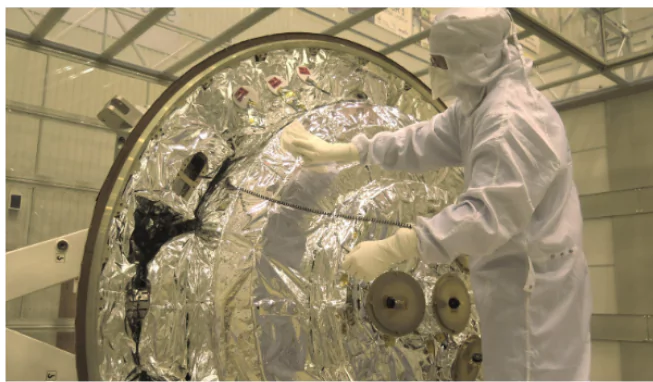
|
Context: China has recently announced the preponement of its Mars sample-return mission, Tianwen-3, to 2028 and has committed to adhering to the planetary protection principle.
About Planetary Protection Principle
- Definition: Planetary Protection is the idea to preserve the biospheres of the earth and the body against contamination by ‘alien’ microbial life, during an interplanetary mission.
- Significance: The principle is essential for maintaining the biosphere of both Earth and other celestial bodies.
- It ensures that the planetary biosphere remains ‘pristine’ and unaffected by external influences from space missions.
- Legal Basis: The principle has a legal basis in Article IX of the Outer Space Treaty (1967).
- It requires countries to avoid “harmful contamination” and adverse changes in the environment of Earth and other planets..
- Method of Compliance: Spacecraft are cleaned by baking them at 120°C for three days, a procedure that ensures minimal microbial contamination.
- Impact on Mission Costs and Design: This rigorous cleaning process increases both the technical demands and costs of space missions but is necessary to maintain biosphere purity.
|
NIDHI i-TBI

|
Context: The Union Minister, while celebrating the 8 years of the Department of Science and Technology’s initiative (DST-NIDHI), inaugurated eight new NIDHI i-TBIs.
About NIDHI initiative:
- It is an umbrella programme conceived and developed by the Innovation & Entrepreneurship division, Department of Science & Technology.
- Launched: The National Initiative for Developing and Harnessing innovations (NIDHI) program was launched in 2016.
- Aim: To nurture start-ups through scouting, supporting and scaling innovations.
- Funding: National Science & Technology Entrepreneurship Development Board (NSTEDB).
- Key Components of the Program:
-
- NIDHI- PRAYAS (Promoting and Accelerating Young and Aspiring Innovators and Startups)
- NIDHI Entrepreneurs-In-Residence (EIR) Program provides fellowships to the students opting for entrepreneurship.
- NIDHI Seed Support Program provisions availability of early-stage seed support funding to startups
- NIDHI Accelerator: An accelerator is typically a 3-6 months fast track structured program helping ideas get accelerated to the next orbit.
About NIDHI-iTBI
- The 8 new NIDHI Inclusive- Technology Business Incubators (i-TBIs) have been set up at different locations across the country.
- i-TBIs is a three-year initiative aimed at fostering innovation and entrepreneurship in educational institutions, benefiting students, faculty, entrepreneurs, and nearby communities.
|
Agrometeorology Advisory
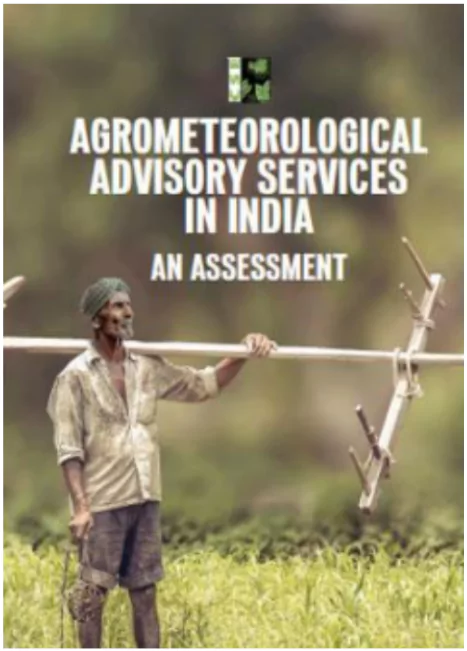
|
Context: Recently, India Meteorological Department (IMD) is planning to revive District Agro-Meteorology Units (DAMUs) under the Gramin Krishi Mausam Sewa (GKMS) scheme.
About District Agro-Meteorology Units:
- Establishment: The IMD established 199 DAMUs in 2018 in collaboration with the Indian Council of Agricultural Research.
- The DAMUs were located within Krishi Vigyan Kendras (KVKs).
- Objective: To prepare and disseminate sub-district level agricultural advisories. In March, DAMUs were shut down following an order issued by the IMD.
- Functioning:
- Preparing Advisory: Meteorology and agriculture experts at DAMUs use IMD weather data to prepare advisories on sowing, harvesting, and input use like fertilizers, pesticides, and irrigation.
- Advisory Dissemination: Advisories were shared with millions of farmers in local languages via text messages, WhatsApp, newspapers, and in-person communication.
- Benefits:
- Early Warning Systems: DAMUs provided early warnings for extreme weather events like droughts and heavy rainfall, helping farmers adapt.
- Positive Impact on Farmers: Numerous studies have highlighted the advantages of agro-met advisories, especially for small and marginal farmers.
|
Clade-2 Strain
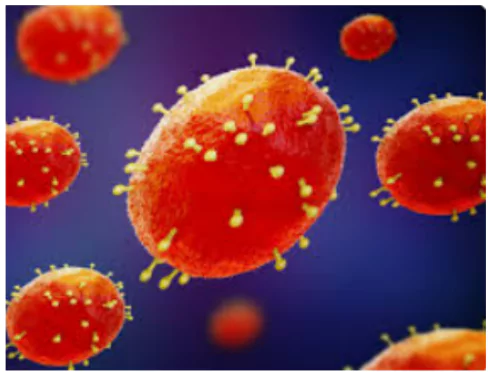
|
Context: A travel-related Mpox (monkeypox) case has been confirmed, with lab tests detecting the West African clade 2 virus in the patient.
About Clade-2 Strain:
- Mpox, an infectious zoonotic disease, is one of the species of pox virus (such as smallpox and cowpox) characterized by a rash followed by bumps that appear on the skin.
- There are two strains of mpox namely:
- Clade I: It is the dominant strain with mortality rate between 3-6%, mostly among young children and immunocompromised individuals.
- Clade II: It is far less dangerous with a case fatality rate of about 0.1 per cent.
- Clade II is still not part of the current public health emergency.
- The emergence of a new virus strain, Clade 1b, spreading mainly through sexual contact, is particularly concerning.
- Transfer Agent: Animals like squirrels, dormice and certain types of monkeys and rats carry the virus and transmit through bites, scratches or bush meat preparation
|
Anti-Submarine Warfare Vessels Launched

|
Context: Two anti-submarine warfare shallow water crafts vessels (ASW-SWC) of the Indian Navy were launched at Cochin Shipyard, recently.
About Anti-Submarine Warfare Shallow Water Crafts (ASW-SWC)
- These new shallow water crafts are part of a contract with Cochin Shipyard (CSL) for eight ASW-SWCs to replace the Abhay-class ASW Corvettes of the Indian Navy
- The vessels are the fourth and fifth ships in the series of the Mahe-class vessels, to be named as INS Malpe and INS Mulki.
- Features:
-
- The vessels can sail at a maximum speed of 25 knots and have an endurance of 1,800 nautical miles.
- The ships, with a displacement about 900 tons, are designed to fit the indigenously developed sonar for underwater surveillance.
- Capabilities: Each vessel has a total installed propulsion power of about 12 MW and is equipped with light-weight torpedoes, ASW rockets and mines, close-in weapon system (30mm gun) and 12.7mm stabilised remote-control guns.
- ASW-SWC vessels are capable of anti-submarine operations in coastal waters, low-intensity maritime operations (LIMO), and mine-laying operations.
|
NSA Ajit Doval to visit Russia for BRICS meet
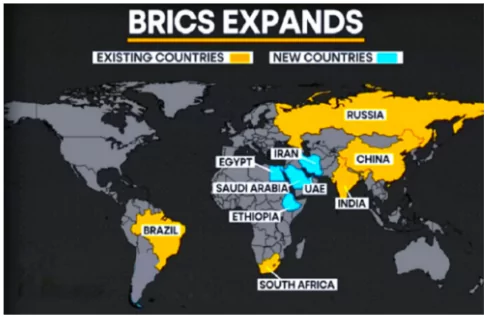
|
Context: National Security Advisor Ajit Doval is visiting Russia amid discussions about India’s potential role in resolving the Ukraine conflict.
More About the News:
- Ajit Doval is visiting Russia primarily to attend a conclave of National Security Advisors of the BRICS grouping for renewed dialogues over peace talks between Ukraine and Russia.
- At the Eastern Economic Forum in Vladivostok, the Russian President suggested India, Brazil, and China as potential mediators for resolving the Russia-Ukraine conflict.
About the BRICS:
- BRICS is an acronym for the grouping of the world’s leading emerging economies, namely Brazil, Russia, India, China and South Africa.
- New members, Egypt, Ethiopia, Iran, Saudi Arabia, and the United Arab Emirates have confirmed the invitation to join BRICS.
- Argentina has decided to not join BRICS.
- First BRIC summit was held in Russia in 2009. It became BRICS with the inclusion of South Africa in 2010.
Key Initiatives of BRICS
- New Development Bank (HQ: Shanghai): To mobilize resources for infrastructure and sustainable development.
- BRICS Contingent Reserve Arrangement:To stop short-term liquidity crises and further strengthen financial stability.
- BRICS Payments Task Force: cooperation on national payments systems.
|
Joint Doctrine For Amphibious Operations
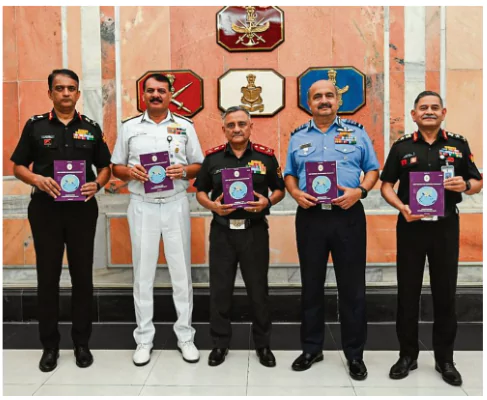
|
Context: Chief of Defence Staff (CDS) released the joint doctrine for amphibious operations during the Chiefs of Staff Committee (COSC) meeting.
About the Joint Doctrine for Amphibious Operations:
- Purpose: The doctrine will provide guidance to the commanders for the conduct of amphibious operations in today’s complex military environment.
- Amphibious Capability: The amphibious capability empowers the armed forces to conduct a “multitude of operations” in the Indian Ocean Region, both during war and peace.
- Multi-Domain Operations: These operations are a crucial component of multi-domain operations and serve as the best example of the cohesion and integration amongst the armed forces.
- Focus on Jointness and Integration: Following the joint doctrine for cyberspace, this is the second joint doctrine released this year.
- It emphasizes the importance of joint efforts and integration within the armed forces.
|
![]() 10 Sep 2024
10 Sep 2024
